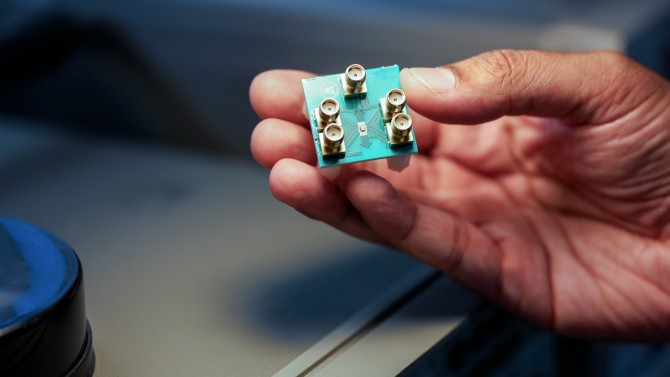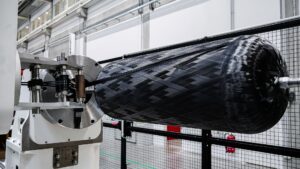
Cornell researchers have made a groundbreaking advancement in microchip technology with the development of a low-power processor dubbed the “microwave brain.” This innovative chip is the first to compute on both ultrafast data signals and wireless communication signals by leveraging the physics of microwaves. Detailed in the August 14 edition of Nature Electronics, the processor represents the first true microwave neural network, fully integrated on a silicon microchip.
The new chip performs real-time frequency domain computation for tasks such as radio signal decoding, radar target tracking, and digital data processing, all while consuming less than 200 milliwatts of power. “Because it’s able to distort in a programmable way across a wide band of frequencies instantaneously, it can be repurposed for several computing tasks,” explained lead author Bal Govind, M.S. ’24, a doctoral student at Cornell. Govind conducted the research alongside Maxwell Anderson ’20, M.S. ’24, also a doctoral student.
Revolutionary Design and Capabilities
The processor’s capabilities are made possible by its design as a neural network, a computer system modeled on the brain, using interconnected modes produced in tunable waveguides. This design allows the chip to recognize patterns and learn from data. Unlike traditional neural networks that rely on digital operations and step-by-step instructions timed by a clock, this network employs analog, nonlinear behavior in the microwave regime, enabling it to handle data streams in the tens of gigahertz—much faster than most digital chips.
“Bal threw away a lot of conventional circuit design to achieve this,” said Alyssa Apsel, the Ellis L. Phillips Sr. Director of the School of Electrical and Computer Engineering at Cornell. Apsel, who co-authored the study with Peter McMahon, associate professor of applied and engineering physics, noted, “Instead of trying to mimic the structure of digital neural networks exactly, he created something that looks more like a controlled mush of frequency behaviors that can ultimately give you high-performance computation.”
Performance and Applications
The chip is capable of performing both low-level logic functions and complex tasks such as identifying bit sequences or counting binary values in high-speed data. It achieved at or above 88% accuracy on multiple classification tasks involving wireless signal types, comparable to digital neural networks but with a fraction of the power and size.
“In traditional digital systems, as tasks get more complex, you need more circuitry, more power, and more error correction to maintain accuracy,” Govind said. “But with our probabilistic approach, we’re able to maintain high accuracy on both simple and complex computations, without that added overhead.”
The chip’s extreme sensitivity to inputs makes it particularly well-suited for hardware security applications, such as sensing anomalies in wireless communications across multiple bands of microwave frequencies. “We also think that if we reduce the power consumption more, we can deploy it to applications like edge computing,” Apsel added. “You could deploy it on a smartwatch or a cellphone and build native models on your smart device instead of having to depend on a cloud server for everything.”
Future Prospects and Scalability
Although the chip is still in the experimental stage, the researchers are optimistic about its scalability. They are exploring ways to enhance its accuracy and integrate it into existing microwave and digital processing platforms. The work originated from an exploratory effort within a larger project supported by the Defense Advanced Research Projects Agency and the Cornell NanoScale Science and Technology Facility, which is funded in part by the National Science Foundation.
As the field of chip technology continues to evolve, innovations like the “microwave brain” could redefine the landscape of data processing and wireless communication. The potential to reduce power consumption and increase processing speeds holds significant implications for the future of electronics, particularly in areas requiring rapid data handling and minimal energy use.
Syl Kacapyr, associate director of marketing and communications for Cornell Engineering, contributed to the dissemination of this pioneering research.







